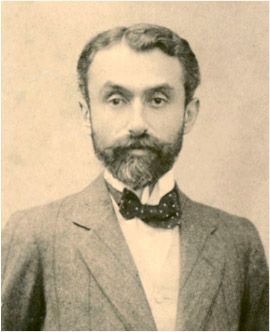Ratanji Tata Age, Death, Caste, Wife, Children, Family, Biography & More
Quick Info→
Children: Naval Tata (adopted)
Age: 47
Father: Jamsetji Tata
| Bio/Wiki | |
|---|---|
| Profession | • Businessman • Philanthropist |
| Career | |
| Awards, Honours, Achievements | In 1916, Knighted in England for his service to humanity. |
| Personal Life | |
| Date of Birth | 20 January 1871 |
| Age (at the time of death) | 47 Years |
| Birthplace | Bombay (now Mumbai) |
| Zodiac sign | Capricorn |
| Nationality | Indian |
| Hometown | Bombay |
| College/University | St. Xavier’s College, Bombay |
| Educational Qualification | Graduation [1]TATA |
| Caste | Parsi [2]Tata |
| Relationships & More | |
| Marital Status | Married |
| Marriage Date | 1892 |
| Family | |
| Wife/Spouse | Navajbai sett |
| Children | The couple had no children and Naval Tata was adopted by Navajbai after the death of Ratanji Tata. [3]Tata Central Archives |
| Parents | Father- Jamsetji Tata Mother- Hirabai Daboo  |
| Sibling | Brother- Dorabji Tata |
| Family Tree |  Note: To know more about the Tata family, read our Tata Family Tree post. |
- Ratanji Tata was an Indian Industrialist and philanthropist. He was a renowned businessman, an art connoisseur and a nationalist who played a major role in setting up the Tata conglomerate. He is still remembered for his remarkable contribution to human welfare and for donating generously on a national and international level.
- Ratanji Tata was born in a Parsi family on Friday, 20 January 1871 in Bombay, India. He was the second son of Jamsetji Tata, a renowned businessman and Hirabai Daboo. He spent his early life living with his family and graduated from St. Xavier’s College, Bombay. [4]Tata Central Archives
- He married the daughter of Ardeshir Merwanji Sett, Navajbai in 1892. After marriage, they lived in England for a few years and later came back to India. They had no children and their only successor was their adopted son, Naval Tata. [5]Tata
- Ratanji Tata joined Tata & Sons as a partner in 1896. After the death of his father in 1904, he took charge of Tata & Co. which was a trading firm of Tata. This trading firm dealt in silk, cotton, yarn, rice and pearls. It had branches in New York, Rangoon, Shanghai, Paris and Kobe which were all handled by Ratanji.
- He also played a major role in setting up Tata’s ironworks project and assisted his elder brother Dorabji Tata in its workings after the death of their father. The project commenced on 26 August 1907 and was named Tata Iron and Steel Company Limited. Later this company was renamed Tata Steel Limited and it has now expanded to 26 countries. [6]TATA Steel
- Ratanji always lived a life of fulfilment and luxuries, still he empathised with those in need and engaged in multiple philanthropical works. He used to make an annual contribution of £1,400 ( Rs. 1,40,000 approx.) for welfare activities to the University of London. After that, Sir Ratan Tata Foundation became a part of the London School of Economics (LSE). [7]TATA
- He also provided financial aid to the department of social science at LSE in 1912 after which this department was renamed to the Ratan Tata Department of Social Science until 1919. He was fond of art and archaeology and made financial contributions to the Pataliputra archaeological excavation from 1913 to 1917. This excavation project led to the discovery of the Mauryan throne room of King Ashoka’s Palace. Despite being an art lover and connoisseur, he donated all his art collection to the Prince of Wales Museum in Bombay in his later years. [8]TATA
- He also donated periodically to medical care, education and natural disaster relief work. He donated Rs. 10,000 to King George V Anti-Tuberculosis League (annually), for ten years and Rs. 1 Lakh for a memorial to Salvation Army.
- He established one of the oldest and most trusted grant offering organizations, Sir Ratan Tata Trust in 1919. TATA
- Ratanji Tata went for his medical treatment to England in 1915. He died at St Ives in Cornwall, England on 5 September 1918. [9]TATA
References/Sources:












